Guide to Edible Fish Roe
Sturgeon caviar isn’t the only fish roe in the sea, though it is the most famous. Roe is the name for the mass of eggs contained in the ovaries of a female fish or shellfish. This guide features some of the other delicious (and more affordable) roes.
Sturgeon-style Roes:
Though not actually from sturgeon, these fish roes are similar enough that they can be used in place of sturgeon roe for canapés, salads & garnishes.
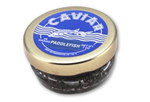 |
Paddlefish Caviar – wild American Paddlefish caviar (aka Spoonbill caviar) is a very affordable substitute for sturgeon caviar (particularly sevruga caviar). This American caviar is firm, light grey, and has a robust yet distinguished buttery flavor with a sea tang. Though harvested and prepared in the US, it is made using traditional Russian guidelines (Astrakhan processed) for a finished caviar that is similar to Russian Malossol caviars. |
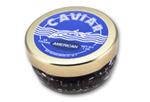 |
Bowfin Caviar – wild American Bowfin caviar has a mild tangy flavor and small brown-black grains. It’s best enjoyed with accompaniments, such as crème fraiche and lemon juice. |
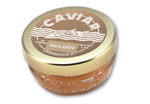 |
Whitefish Caviar – The small golden eggs of this caviar are harvested from Golden Whitefish, a species native to the Great Lakes. Its flavor is tangy yet slightly sweet. |
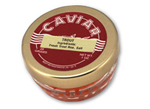 |
Trout Caviar – Harvested from freshwater trout caught in France’s inland lakes, this medium-sized caviar has a firm texture, strong flavor, and a translucent pink appearance with tiny orange spots. |
Sushi-style Roes:
Most commonly found in sushi, these colorful roes can also be used in salads, noodle dishes, canapés, eggs or as an eye catching garnish. They are most commonly known by their Japanese names.
 |
Ikura (Species: Pink Salmon) – The largest of the sushi-style roes, this ikura has been sustainably harvested from plentiful pink salmon caught by family-run fishing boats. Beyond its common use as a sushi ingredient, ikura can also be blended with cream cheese to create a tasty spread for crackers. |
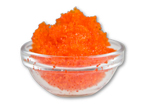 |
Tobiko (Species: Larger Capelin or Flying Fish) – Tobiko eggs (aka tobico, tobikko) are much smaller than Ikura. They are available in a variety of flavors (such as wasabi tobiko). |
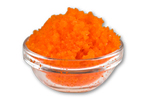 |
Masago (Species: Capelin) – The smallest of the sushi-style roes, orange colored masago (aka capelin roe) can be substituted for unflavored tobiko in most recipes, offering a different appearance and slightly different texture. |
 |
Uni (Species: Sea Urchin) – Unlike the other roes that offer perfectly round jewel-like eggs, fresh sea urchin roe is more paste-like in consistency. Though it’s most often found in sushi, uni has a strong cult following as an ingredient in scrambled eggs. |
Specialty Roes:
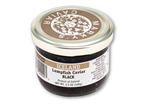 |
Black Lumpfish Caviar – A Scandinavian delicacy, lumpfish roe is crunchy with a pronounced salty-fish flavor. This caviar is pasteurized, making it shelf stable. |
 |
Grey Mullet Bottarga – Roe that has been pressed, dried, and salt cured is called bottarga. A beloved Mediterranean ingredient, bottarga is usually shaved, very thinly sliced, or grated over food as a seasoning. Grey mullet bottarga (aka botargo, boutargue, poutargue, batrakh, karasumi, white caviar) is the variety most commonly used in French, Greek, and Sardinian cooking. Because its flavor is heat sensitive, it should only be added at the end of cooking or to a finished dish. It is very potent, so a little goes a long way. It has a long shelf life, lasting for up to a year in the fridge. |


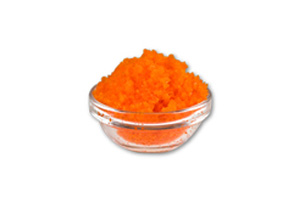
Comments 1
Love, love, love this guide. I’ve always wanted to use more roe in my cooking and now I better know what should be used for what. I love the idea of mixing the roe in with cream cheese for a simple spread. How yummy.